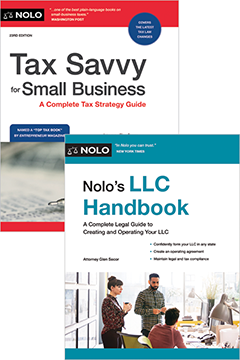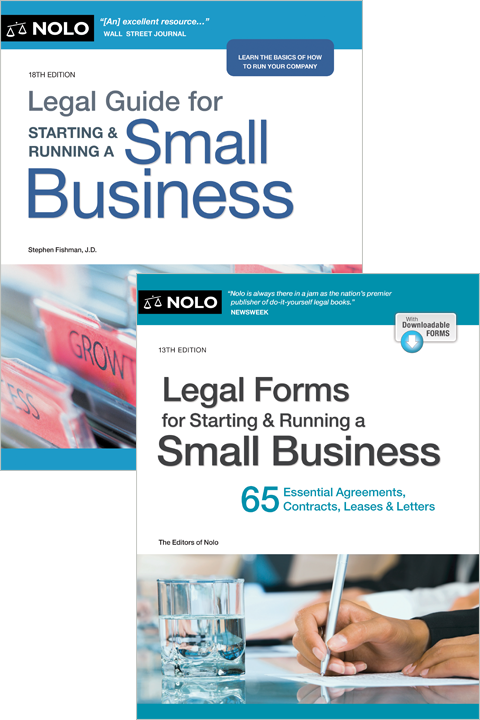Learn the basics of accounting and bookkeeping for your small business.
Many new business owners are daunted by the mere idea of bookkeeping and accounting. But both jobs are vital to a business's financial and legal well-being. Typically, bookkeeping refers to a business's daily financial recordkeeping and maintenance. Accounting relates to a company's financial health and outlook.
You'll need to come up with a plan to conquer both your business's bookkeeping and accounting. Some business owners go for a do-it-yourself approach, while others feel more comfortable employing a bookkeeper or accountant. As a third option, you should also look into accounting software that either you or a designated financial helper can use.
What Is the Difference Between Bookkeeping and Accounting?
Bookkeepers and accountants both handle a business's financials. While the work they do often interact, bookkeepers and accountants serve two distinct and important roles.
In general, bookkeepers handle the day-to-day business, such as:
- sending invoices and recording payments
- tracking and recording expenses
- reconciling bank statements
- preparing cash flow statements, profit and loss forecasts, and other financial statements
- maintaining a general ledger, and
- processing payroll.
By contrast, accountants:
- analyze accounts, statements, and other financial data
- prepare tax documents and returns
- advise businesses on financial decisions, and
- create risk analyses.
You'll likely have regular conversations with your accountant. But your bookkeeper will serve a more active role in your business. You might decide to hire a full-time or part-time bookkeeper and then outsource specialized tasks, like filing taxes, to an accounting firm.
Why Does Your Business Need Bookkeeping?
Keep in mind that bookkeeping and accounting share two basic goals:
- to keep track of your income and expenses, which improves your chances of making a profit, and
- to collect the financial information necessary for filing your various tax returns.
There's no requirement that your records be kept in any particular way. As long as your records accurately reflect your business's income and expenses, the IRS will find them acceptable. (However, some businesses must use a particular method of crediting their accounts. Specifically, some larger businesses must use the accrual method of accounting instead of the cash method.)
Depending on the size of your business and the amount of sales, you can create your own ledgers and reports, rely on accounting software, or hire outside help.
Bookkeeping and Accounting Methods
When starting a business, you often face many choices about how to invest your money. For example, some small business owners can save money by working from home instead of signing a commercial lease. Other people opt to lease necessary business equipment instead of buying it outright to cut down on initial startup expenses.
A common way business owners save money is by taking on the work themselves instead of outsourcing tasks to employees, independent contractors, or third-party providers. In the case of a business's bookkeeping, you might choose to track your company's financial transactions yourself using a spreadsheet on your computer (like Excel or Google Sheets) or on a physical record book.
How you decide to keep your business's books will depend on:
- your bookkeeping and accounting experience
- your bandwidth (how much time you can personally devote to this task)
- whether your business can afford to pay someone else to keep your company's books
- the size of your business
- the number of financial transactions your business will have, and
- the complexity of those transactions.
Many smaller businesses reach a manageable compromise: bookkeeping or accounting software. You can purchase most accounting software on a monthly subscription basis.
Should You Use Bookkeeping or Accounting Software?
If you decide to use accounting software, you have several options available to you based on your business needs. Some popular accounting software companies include:
- Intuit Quickbooks
- Xero
- Sage, and
- Zoho.
These companies offer a range of plans, from basic to advanced or premium. Typically, basic accounts are your most budget-friendly option. With these plans, you can get software that performs basic bookkeeping functions like creating invoices and receiving online payments, organizing income and expenses, filing receipts, and generating general reports.
Alternatively, you can go with a more heavy-duty system in a premium or advanced option. But these additional features will cost you. Under these plans, you'll find software that performs all the basic bookkeeping functions, but also comes with features that specific businesses could benefit from. For instance, some accounting software tracks the profitability of individual projects, manages product inventory, and creates more complex reports.
Payroll Software
Most accounting software providers also offer payroll services as add-ons to their bookkeeping software. These payroll services can include:
- automated payroll calculations and deductions
- direct deposit for employees
- federal and state tax rate monitoring
- automatic payroll tax filing and payments, and
- online access to pay stubs and tax filings for employers and employees.
If you have employees, consider investing in payroll software. It can provide you with assurance that you're complying with all applicable employment tax laws. If you want to hire a bookkeeper or accountant to handle your company's payroll, then they likely already use a payroll provider.
Three Steps to Bookkeeping for Your Business
The actual process of keeping your books is easy to understand when broken down into three steps.
- Keep receipts or other acceptable records of every payment to and every expenditure by your business.
- Summarize your income and expenditure records on a periodic basis (daily, weekly, or monthly).
- Use your summaries to create financial reports that will tell you specific information about your business, such as how much monthly profit you're making or how much your business is worth at a specific point in time.
Whether you do your accounting by hand on ledger sheets or use accounting software, these principles are exactly the same.
Step One: Keeping Your Receipts
Each of your business's sales and purchases must be backed by some type of record.
For a sale, the record should include at the very least:
- The date of the sale. You can have a separate record that corresponds to each day, week, or month. Alternatively, you can have one continuous sheet that includes a date with every transaction.
- The amount of the sale (sales price). You should break down the cost of the sale into the purchase price and the sales tax. By making this distinction, you can know how much your business is actually making from the sale and how much you need to report and remit to the government.
- The quantity of the sale. Tracking how much of a product someone purchases in a single transaction is helpful for both financial and inventory tracking.
- A brief description of the sale. If you sell products with corresponding item numbers, then include the item numbers in your records. While this information isn't critical to track your finances, it's helpful information for inventory purposes. Don't get weighed down by how much information you enter here. But you should include enough context (like the item name) to give you an immediate idea of what was sold when you look back at your records later.
- Method of payment. Keep track of whether the customer paid with a card, cash, bank transfer, or payment transfer app (like Venmo). This information will help you reconcile your accounts later.
You should also consider including the name of the customer or client. If you have dozens or more transactions per day and an informal record-keeping system, then this piece of information might not be a priority. For instance, if you sell goods at an open market in a touristy area, then it's less important to know each customer's name. But if you provide services and send out invoices to just a handful of clients, then it makes sense to associate each transaction with a named client.
For an expenditure, the record should include at the very least:
- The date of the purchase. You should note the date of purchase so you can later compare it to your bank records.
- The amount of the purchase. Record how much you paid for the product or service. If you have a recurring payment (such as for a subscription), then the amount should generally remain the same from month to month (or week to week) unless you know the provider has raised its price. You don't need to break down the price into the sales price and tax.
- A brief description of the purchase. You can include information like the name of the product or service and the quantity.
- The name of the seller. It's important to keep track of who you're sending money to.
- Method of payment. It should be relatively easy to track purchases using your debit or credit card or bank transfers. But it's particularly important to log any cash payments you make because you won't have a record of these purchases otherwise. It's especially important that you keep a copy of the receipts from cash payments in case the Internal Revenue Service (IRS) audits your business.
You'll use these records to create summaries of your transactions.
From a legal point of view, your method of keeping receipts can range from slips kept in a cigar box to a sophisticated cash register hooked into a computer system. Practically, you'll want to choose a system that fits your business needs.
For example, a small service business that handles only relatively few jobs could get by with a bare-bones approach. But the more sales and expenditures your business makes, the better your receipt filing system needs to be.
Step Two: Setting Up and Posting to Ledgers
A completed ledger is really nothing more than a summary of revenues, expenditures, and whatever else you're keeping track of (entered from your receipts according to category and date). Later, you use these summaries to answer specific financial questions about your business, such as whether you're making a profit and, if so, how much.
Post receipts on a regular basis. On a regular basis—like every day, once a week, or at least once a month—you should transfer the amounts from your receipts for sales and purchases into your ledger. This process is called "posting." How often you do this depends on how many sales and expenditures your business makes, as well as how detailed you want your books to be.
Your posting schedule depends on your sales numbers. Generally speaking, the more sales you do, the more often you should post to your ledger. A retail store, for instance, that does hundreds of sales amounting to thousands of dollars every day should post daily. With that volume of sales, it's important to see what's happening every day and not to fall behind with the paperwork. To accomplish this important daily task, the busy retailer should use a cash register that totals and posts the day's sales to a computerized bookkeeping system at the push of a button.
A slower business, however, or one with just a few large transactions per month, such as a small website design shop, dog-sitting service, or swimming pool repair company, would probably be fine if it posted weekly or even monthly.
If possible, use accounting software. You can purchase an accounting software program that will generate its own ledgers as you enter your information. It'll also automatically generate the necessary financial reports from the same information. All but the tiniest new businesses are well advised to use an accounting software package to help keep their books.
Step Three: Creating Basic Financial Reports
Financial reports are important because they bring together several key pieces of financial information about your business. Think of it this way: while your income ledger might tell you that your business brought in a lot of money during the year, you won't know if you turned a profit without measuring your income against your total expenses. And even comparing your monthly totals of income and expenses won't tell you whether your credit customers are paying fast enough to keep adequate cash flowing through your business to pay your bills on time.
You need financial reports to combine data from your ledgers and sculpt it into a shape that shows you the big picture of your business. The key reports you need to create regularly are a cash flow analysis, a profit and loss forecast, and a balance sheet. As mentioned earlier, most accounting software programs can generate these kinds of reports.



